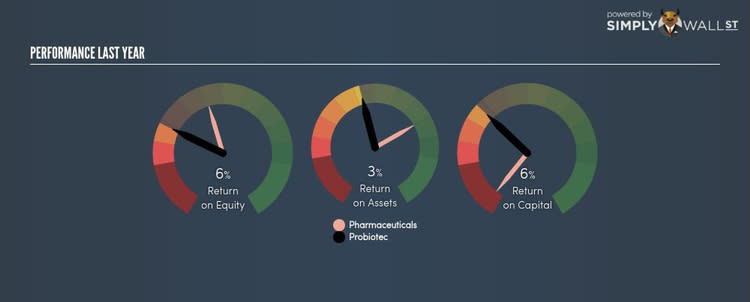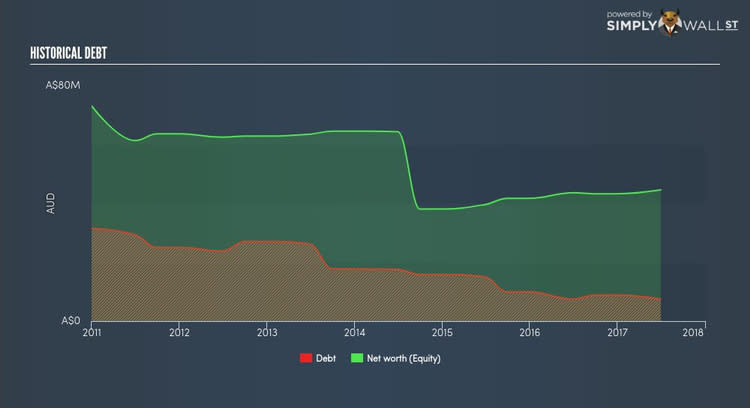With An ROE Of 5.69%, Has Probiotec Limited’s (ASX:PBP) Management Done A Good Job?

Probiotec Limited (ASX:PBP) delivered a less impressive 5.69% ROE over the past year, compared to the 13.35% return generated by its industry. Though PBP’s recent performance is underwhelming, it is useful to understand what ROE is made up of and how it should be interpreted. Knowing these components can change your views on PBP’s below-average returns. Metrics such as financial leverage can impact the level of ROE which in turn can affect the sustainability of PBP’s returns. Let me show you what I mean by this. See our latest analysis for PBP
Breaking down Return on Equity
Firstly, Return on Equity, or ROE, is simply the percentage of last years’ earning against the book value of shareholders’ equity. An ROE of 5.69% implies A$0.06 returned on every A$1 invested. While a higher ROE is preferred in most cases, there are several other factors we should consider before drawing any conclusions.
Return on Equity = Net Profit ÷ Shareholders Equity
ROE is measured against cost of equity in order to determine the efficiency of PBP’s equity capital deployed. Its cost of equity is 11.10%. Since PBP’s return does not cover its cost, with a difference of -5.40%, this means its current use of equity is not efficient and not sustainable. Very simply, PBP pays more for its capital than what it generates in return. ROE can be dissected into three distinct ratios: net profit margin, asset turnover, and financial leverage. This is called the Dupont Formula:
Dupont Formula
ROE = profit margin × asset turnover × financial leverage
ROE = (annual net profit ÷ sales) × (sales ÷ assets) × (assets ÷ shareholders’ equity)
ROE = annual net profit ÷ shareholders’ equity
The first component is profit margin, which measures how much of sales is retained after the company pays for all its expenses. Asset turnover reveals how much revenue can be generated from PBP’s asset base. And finally, financial leverage is simply how much of assets are funded by equity, which exhibits how sustainable PBP’s capital structure is. Since ROE can be artificially increased through excessive borrowing, we should check PBP’s historic debt-to-equity ratio. At 16.72%, PBP’s debt-to-equity ratio appears low and indicates that PBP still has room to increase leverage and grow its profits.
What this means for you:
Are you a shareholder? PBP’s below-industry ROE is disappointing, furthermore, its returns were not even high enough to cover its own cost of equity. Since its existing ROE is not fuelled by unsustainable debt, investors shouldn’t give up as PBP still has capacity to improve shareholder returns by borrowing to invest in new projects in the future. If you’re looking for new ideas for high-returning stocks, you should take a look at our free platform to see the list of stocks with Return on Equity over 20%.
Are you a potential investor? If you are considering investing in PBP, looking at ROE on its own is not enough to make a well-informed decision. I recommend you do additional fundamental analysis by looking through our most recent infographic report on Probiotec to help you make a more informed investment decision.
To help readers see pass the short term volatility of the financial market, we aim to bring you a long-term focused research analysis purely driven by fundamental data. Note that our analysis does not factor in the latest price sensitive company announcements.
The author is an independent contributor and at the time of publication had no position in the stocks mentioned.


